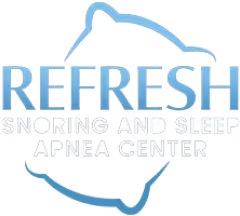What the P.A.L.M. Model Can Teach Us About Sleep Apnea
Sleep apnea has long been viewed as a simple condition caused by a blocked airway. However, for many patients, the true picture is much more complicated. If you have ever wondered, "what causes sleep apnea?" and only received “airway obstruction” as an answer, you are missing an important part of the story.
The P.A.L.M. model offers a more complete framework. Developed through years of clinical research, it categorizes the different underlying causes of sleep apnea. This personalized approach not only improves diagnosis but also guides more effective treatment options tailored to the individual.
Is Sleep Apnea Genetic or Environmental?
A Multifactorial Condition
The causes of sleep apnea are rarely singular. Genetics certainly play a role. Features like a narrow airway, a large tongue, or a small, recessed jawline—traits that can run in families—may increase your risk. If you have ever asked, is sleep apnea genetic? the answer is: partially, yes.
However, environmental and lifestyle factors also contribute significantly. Obesity, sleep position, alcohol consumption, and smoking can worsen airway collapse during sleep. Because sleep apnea results from a combination of factors, personalized diagnosis is crucial. Knowing the underlying cause helps in developing the most effective strategy, whether that involves devices, surgery, behavioral changes, or other therapies.
What Is the P.A.L.M. Model?
A Personalized Approach to Sleep Apnea Causes
The P.A.L.M. model—developed through research including the work of Dr. Danny Eckert—offers a more nuanced understanding of what causes sleep apnea. Instead of assuming every case is purely mechanical, this model identifies four primary contributors. Recognizing these categories allows clinicians to move beyond a one-size-fits-all mentality and offer personalized sleep apnea treatment.
Patients who understand their specific apnea type are more likely to succeed with therapy, whether they choose CPAP, an alternative to CPAP, or a combined approach.
Breaking Down the P.A.L.M. Model
P – Poor Pharyngeal Muscle Tone
One common cause of airway collapse during sleep is poor pharyngeal muscle tone. These muscles are responsible for keeping the airway open, and when they relax too much, breathing becomes obstructed.
In this subtype, treatments may focus on strengthening these muscles through targeted therapy, oral appliance use to reposition the jaw, or positional therapy that encourages side-sleeping rather than back-sleeping.
A – Airway Anatomy
Structural airway issues, such as a small jaw, large tonsils, or a thick tongue, make some individuals more prone to airway obstruction. These anatomical factors explain why sleep apnea subtypes vary so widely between patients.
In such cases, CPAP therapy can be highly effective. However, other options, such as oral devices or minimally invasive surgeries, may also offer significant relief. To explore these CPAP alternatives, speaking with a knowledgeable doctor is essential.
L – Low Arousal Threshold
Some individuals awaken too easily in response to minor breathing disturbances. This heightened sensitivity leads to fragmented sleep without necessarily causing large numbers of full apneas.
Treatment for low arousal threshold often focuses on behavioral therapies aimed at promoting deeper, more stable sleep. Gentle pressure devices or therapies that stabilize breathing without triggering awakenings may also be recommended.
M – Maladaptive Respiratory Control
In this scenario, the brain’s breathing control system becomes unstable, leading to a cycle of over-breathing and under-breathing. While similar to central sleep apnea, this issue can occur alongside obstructive events.
Management strategies may include medication, low-dose oxygen therapy, or specialized devices that assist with regulating breathing rhythms during sleep. Understanding the root cause allows providers to address the nervous system’s role in respiratory control effectively.
Why This Matters for Treatment-Resistant Sleep Apnea
When CPAP Alone Doesn’t Work
For some patients, using a CPAP machine does not fully resolve their symptoms. They may still feel tired, foggy, or unrefreshed. If CPAP therapy alone is not successful, it is possible that the root cause of the apnea has not been properly identified.
Applying the P.A.L.M. model helps clinicians dig deeper into what causes sleep apnea for each individual, creating a more targeted, customized care plan. Patients frustrated with CPAP or seeking additional solutions should consider undergoing a complete evaluation based on this model.
For personalized advice and modern solutions, consult a sleep center that offers alternatives to CPAP options and advanced diagnostic tools.
Personalized Therapy = Better Sleep
The more precise the diagnosis, the better the treatment outcomes. Personalized sleep apnea treatment based on P.A.L.M. analysis ensures that interventions address the real cause of disrupted sleep, whether it is muscle tone, anatomical issues, respiratory control instability, or an overactive arousal response.
This multi-dimensional view supports broader, more effective care strategies that include lifestyle changes, behavioral coaching, advanced oral appliances, and state-of-the-art medical devices.
Conclusion
Sleep apnea is not a one-size-fits-all condition. It often stems from a combination of muscle tone deficiencies, anatomical structures, nervous system feedback, and sleep sensitivity. The P.A.L.M. model provides a more complete framework to understand these complexities and guide individualized care.
If you are struggling with poor sleep quality or if CPAP has not delivered the results you expected, now is the time to explore personalized sleep apnea treatment with Refreshed Snoring & Sleep Apnea Center.
Take the first step toward better sleep—schedule a consultation and find the treatment approach that matches your unique sleep apnea type.

.svg)




